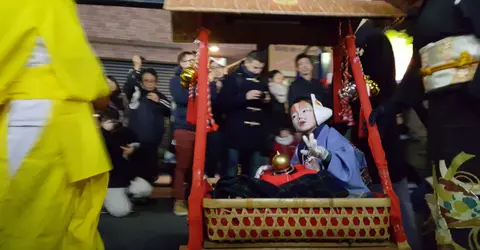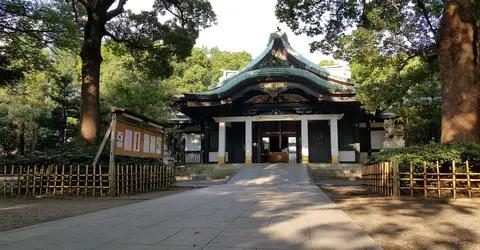Oji's Inari Matsuri
- Published on : 22/10/2020
- by : Ph.L
- Youtube

Le festival des renards d'Oji
PhL
On December 31, discover the fox parade
North of the capital, Oji is a small district full of charm. Between the famous Asukayama Park, the last tram in the city, and its small cafes, this residential area attracts more and more visitors every year, curious to unlock the secrets it holds. Especially on New Year's Eve, when the inhabitants indulge in Inari Matsuri, a great festival given in honor of the harvest divinity.
A district protected from the heavens
From Oji, we appreciate its flowery streets . But also its small traditional restaurants , and its two centuries-old sanctuaries. Erected at both ends of the district, these last mark out its outlines.
First, we find Oji Inari Jinja , a shrine dating back to the Heian period (794-1185) and dedicated to Inari , the deity of harvest and fertility.
Nestled in the heart of a residential area, Oji Inari Jinja is an ode to Nature . And although the main altar is easily accessible from the street, it will be necessary to show curiosity to discover the small altars and torii hidden a little lower, between the rocks and the terraced houses.
- Read also The Oji district
Ausud, it is the majesty uxOji Jinja who protects the district . A shrine built in the 14th century , in honor of several anonymous deities working for the health of loved ones.
These are two places of worship, which will serve as the departure and arrival points of the Inari Matsuri every year.

Oji Jinja
Ph.L
The legend of Oji's foxes
It is since the 11th century that the inhabitants of Oji have used to pay homage to the divinity of the harvests. At a time when, it is said, the fox spirits came to dance around the Oji Inarijinja every winter .
Every December 31 , it is now a procession of festival-goers that comes to replace these beneficent spirits. We disguise ourselves, we dance, and we play music to hope to attract the faithful companions of the divinity who, in the past, brought luck and happiness to the inhabitants. And that would seem to work, since spirits would still mingle with the crowd today, when no human was paying attention.
A high-spirited festival
A friendly moment, the Inari Matsuri is a real collective work . Craftsmen, schoolchildren, and even salarymen , a large part of the inhabitants then put their hands in the dough to pay homage to the protective goddess of the neighborhood . And from the month of November, dozens of people train every weekend to perfect the dances and music that will accompany the parade.
- Read also: Matsuri, Japanese festivals
On December 31, shortly before the twelve strokes which will ring the beginning of the new year , a massive process goes back to the light of lanterns. The mikoshi (portable altar) thus leaves Oji Jinja , followed by dancers and taiko players, to finish his race at Inari jinja forty minutes later, under the gaze of the festival-goers.
Also linked to fertility, the children will play a very special role in the procession . Make-up and dressed like byakko (white fox representing the divinity on iconographies), they will serve as divine messengers. Like a bridge between the real and the imaginary, during this unusual evening.
Once there, the procession comes to an end, where the lion dances take place on the main stage, welcoming onlookers who come to make their first prayer of the year.
- Read also: How to pray the Japanese way
Be careful though, the matsuri attracts crowds ! This estpourquoi, it is recommended to enjoy the standsde streetfood Desla end of the parade, before attempting his luck in verstrois sanctuary or four in the morning, when the world is a peudissipé.
Collector (s), take the opportunity to stock up on trinkets as well , since masks and soft toys bearing the effigy of Inari are on sale that night in the streets that connect the two places of worship.
































